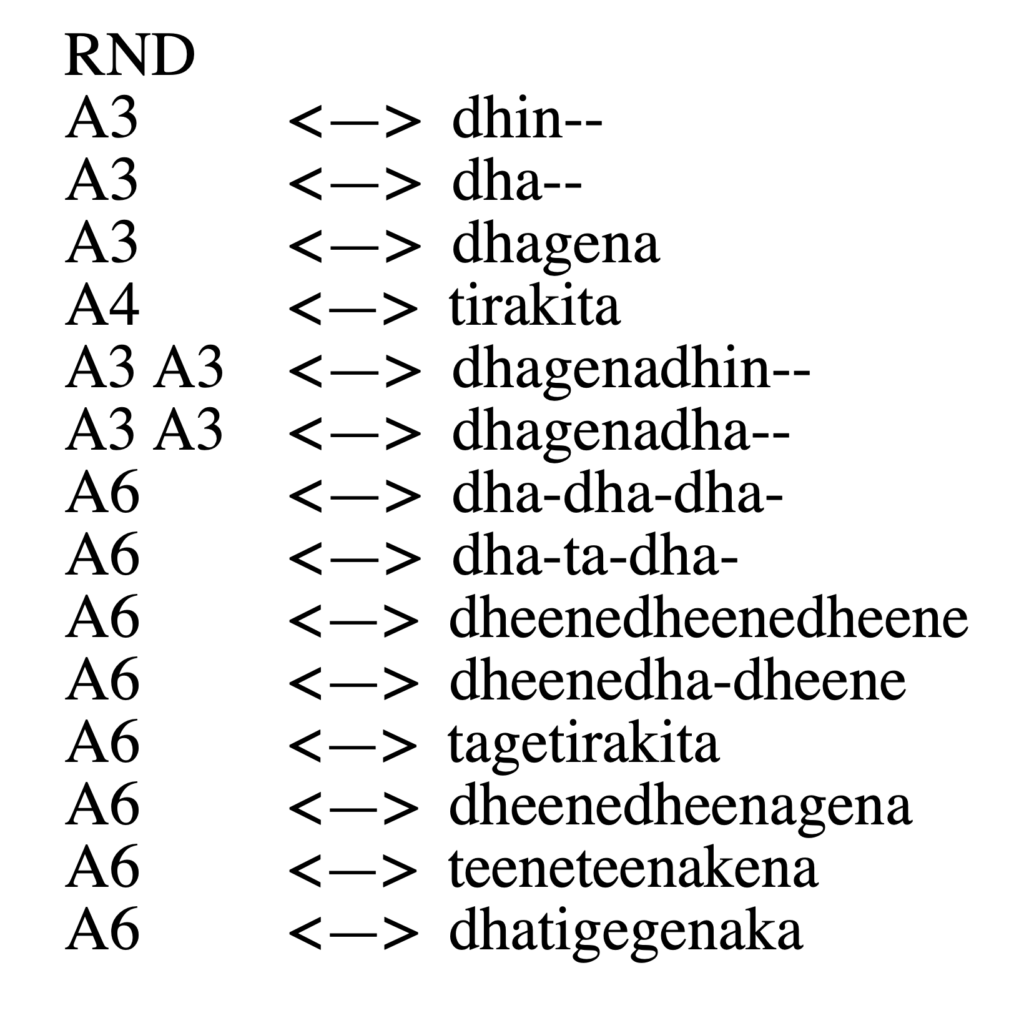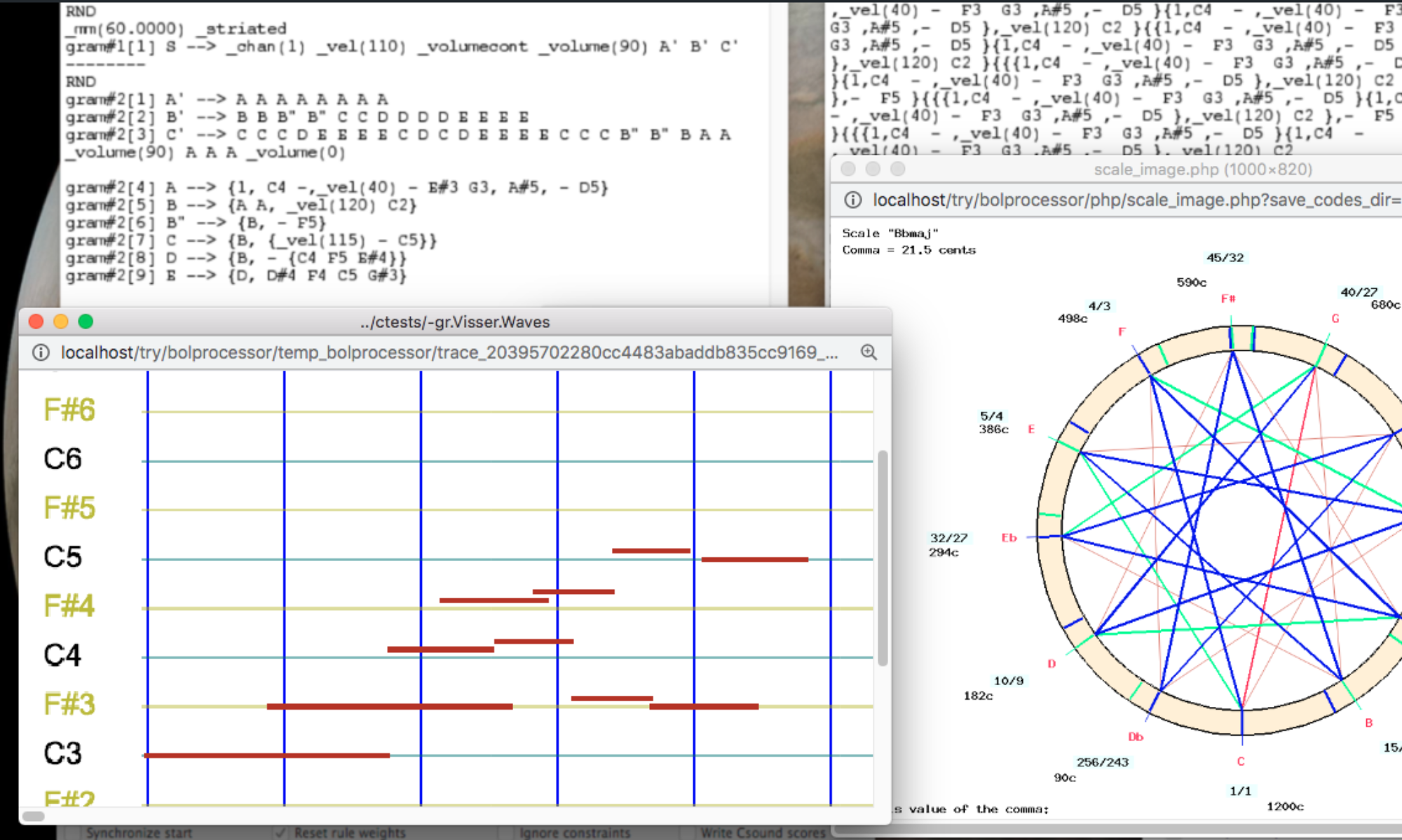James Kippen & Bernard Bel
Modelling music with grammars: formal language representation in the Bol Processor. In A. Marsden & A. Pople (eds.): Computer Representations and Models in Music, London, Academic Press, 1992, p. 207-238.
Abstract
Improvisation in North Indian tabla drumming is similar to speech insofar as it is bound to anunderlying system of rules determining correct sequences. The parallel is further reinforced by the fact that tabla music may be represented with an oral notation system used for its transmission and, occasionally, performance. Yet the rules are implicit and available only through the musicians’ ability to play correct sequences and recognise incorrect ones. A linguistic model of tabla improvisation and evaluation derived from pattern languages and formal grammars has been implemented in the Bol Processor, a software system used in interactive fieldwork with expert musicians. The paper demonstrates the ability of the model to handle complex structures by taking real examples from the repertoire. It also questions the relevance of attempting to model irregularities encountered in actual performance.
Excerpts of an AI review of this paper (Academia, June 2025)
Summary of the Work

The manuscript explores the use of formal grammar theories to model improvisational structures in North Indian tabla drumming. Drawing an analogy to language, the authors discuss how grammar-based representations can capture the rhythm, structure, and constraints of tabla musical sequences, which often rely on mnemonic syllables (“bols”) rather than Western script. By introducing and detailing the Bol Processor software, the authors demonstrate how the tool can generate, analyze, and compare tabla phrases in ways that blend both deterministic and probabilistic approaches. Throughout the work, real-world examples from performances and teaching traditions bolster the theoretical explanations.
Strengths
Clear Theoretical Rationale
The authors provide a thorough background for why linguistic concepts—particularly grammatical formalisms—are suitable for analyzing tabla compositions. They effectively frame the similarities between language rules and musical rules, especially regarding how musicians differentiate “correct” from “incorrect” sequences.
Comprehensive Treatment of Formal Grammars
The discussion includes multiple types of grammars (context-free, context-sensitive, marking of structural positions, and pattern grammars) and shows how each can be adapted or extended to capture nuances of tabla music. The step-by-step explanations of grammar derivations, contexts, parsing, and membership tests are detailed and instructive.
Practical Demonstration via the Bol Processor
By anchoring the discussion in a working piece of software, the manuscript transcends theory and illustrates practical methodology. Concrete examples of how the Bol Processor is used—both in generation (modus ponens) and membership checks—highlight the value of the tool for ethnomusicological fieldwork and analysis.
Engagement with Complex Musical Realities
The manuscript acknowledges that musical performance often deviates from neatly defined theoretical models. The authors address how irregularities and “maverick” variations might still be captured or reconciled within the formal framework, although at the cost of increasingly complex grammars.
Probabilistic Extension
The move from purely deterministic grammars toward probabilistic grammars is a notable contribution, especially given improvisational contexts. Assigning weights to production rules captures more realistic musical scenarios, enabling the software to suggest typical (rather than merely possible) musical phrases.
Overall Assessment
The manuscript provides a robust, methodologically sound illustration of how formal grammars can be adapted to model and analyze the complex world of North Indian tabla improvisation. Its detailed exploration of grammar types and parsing approaches is commendable and is supported by real-world musical examples that demonstrate both the potentials and the evolving nature of such computational models. The Bol Processor, as presented, appears to be a valuable contribution not only for ethnomusicologists and computational musicologists but also for any scholar interested in structural approaches to musical improvisation. The incorporation of probabilistic reasoning further deepens the system’s applicability to performance-based context and highlights how formal language models can be refined through interactive feedback with expert practitioners.
